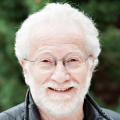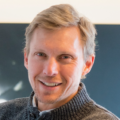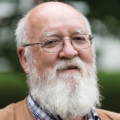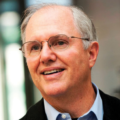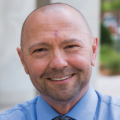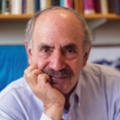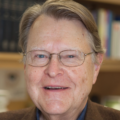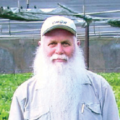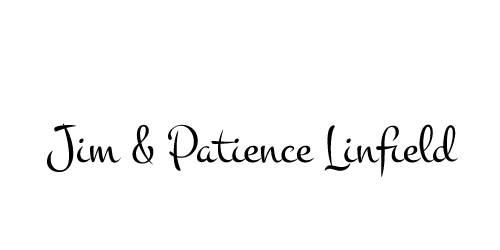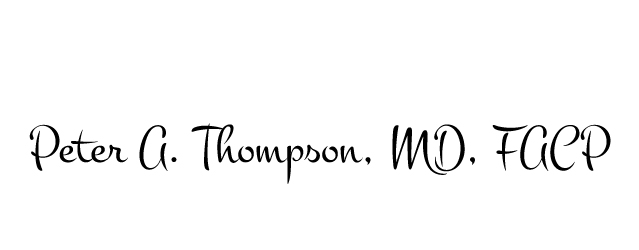2018
Complexity: The Intersections Between Health and Policy
-
Welcome
-
Welcome to the 9th Annual GoldLab Symposium
Larry Gold, Ph.D. is the Founder and Chairman of the board, and past CEO of SomaLogic. Prior to SomaLogic, he founded NeXagen, Inc., which later became NeXstar Pharmaceuticals, Inc. In 1999, NeXstar merged with Gilead Sciences, Inc. to form a global organization committed to the discovery, development and commercialization of novel products that treat infectious diseases. Before forming NeXagen, he...
-
COLS Update
An update on the Colorado Longitudinal Study by Dr. Phyllis Wise.
-
-
I. Scaling our Thinking: From Politics to Health
-
Rethinking U.S. Foreign Policy
For decades, three competing worldviews have battled to define American foreign policy. Neocons want the U.S. to act as global policeman and to judge others based on their domestic as well as their international policies. Realists believe we should be focused on the small number of other great powers on matters of war and peace. Liberal Internationalists see U.S. security...
-
DE-CRUIT® Treating Trauma Through Shakespeare and Science
Recruited at a psychologically malleable age, young men and women are indoctrinated using a systematic process that “wires” them for war. But, there is no training to undo this indoctrination. Returning veterans are vulnerable to persistent and pervasive effects of traumatic stress largely due to the challenge of reintegrating into civilian life. Up to 68% of veterans drop out of...
-
High-Reliability, Person-Centered Health Care: It Can’t Happen without the National Library of Medicine
As health care migrates from the hospital and clinic to the home and community, so to must the National Library of Medicine (NLM). In 2017, the NLM established NLM Strategic Plan 2017-2027: A Platform for Biomedical Discovery and Data-Powered Health, which will position the Library to carry out its congressionally mandated mission and support the important work of the National...
-
Realizing SomaLogic’s Dream: Plans to Deploy Large Scale Proteomics to Guide Best Health
For nearly 20 years, SomaLogic has been guided by Larry Gold’s vision of the Wellness Chip – a simple blood test that can read out a person’s state and trajectory of health broadly, with the precision needed to guide effective action. The platform is now even more exciting than he envisioned. We will soon deliver “Wellness Chip v1.0” to patients...
-
-
II. Are Tumors “Conscious”?
-
Agents and Homunculi: Does it Take a Village to Make a Conscious Organism?
From one biological perspective, a multicellular organism such as a person is better seen as a relatively stable community of semi-autonomous cellular agents, with agendas of their own; this huge population of cells (having thousands or even millions of distinct genomes) normally manages to hold it together for decades. How can an aggregation of trillions of selfish, myopic cells discover...
-
How Machine Intelligence Could Accelerate Holographic Medical Imaging
This talk is a short primer on the evolution from classical statistical analysis through machine learning and ultimately toward Artificial General Intelligence. With this in mind, Craig will demonstrate new ways of doing holographic medical imaging and explain how these techniques can be put into production in the future by exploiting these evolving capabilities in machine intelligence. He will demonstrate...
-
Translating Cancer Biology into Novel Therapies
RalA and RalB are small GTPases that support malignant development and progression in experimental models of lung, pancreatic, colon, prostate, and bladder cancer. However, demonstration of their clinical relevance in human tumors remained lacking. Hence, we developed tools to evaluate Ral protein expression, activation, and transcriptional output and evaluated their association with clinicopathologic parameters in common human tumor types. To...
-
Epigenetic Programs and Cancer Progression
The current interest in sequencing the genomes of cancer cells has distracted attention away from the role of epigenetic programs, which may in the end be responsible for the lion’s share of distinct cancer cell-associated phenotypes. One type of epigenetic program derives from differentiation programs of the normal cells-of-origin of cancer cells, which continue to influence the phenotypes of derived...
-
-
III. Thinking Big While Laughing
-
Design, Construction, and Analysis of a Minimal Bacterial Cell
Clyde’s team used whole-genome design and complete chemical synthesis to minimize the 1079–kilobase pair synthetic genome of Mycoplasma mycoides JCVI-syn1.0. An initial design, based on collective knowledge of molecular biology combined with limited transposon mutagenesis data, failed to produce a viable cell. Improved transposon mutagenesis methods revealed a class of quasi-essential genes that are needed for robust -growth, explaining the...
-
Carl Woese and the Non-Tree of Life
Carl R. Woese, of Urbana, Illinois, was the man who invented molecular phylogenetics. Although famous to researchers in molecular evolution and microbiology—revered by many, suspect to some—he remains almost entirely unknown to the general public. Even among organismic biologists, ecologists, and evolutionary biologists who study flora and fauna, the name Woese draws a blank. He is arguably, as I’ve often...
-
The Value of Medicaid: Trends and Threats in 2018
What are the market, policy, and financing trends that will impact how states manage Medicaid in 2018 and beyond? How are states connecting the need for health care coverage with improving the overall health of a community? How are changing demographics and the graying of Colorado impacting the services and expenses associated with our Medicaid program? What has been the impact of...
-
‘Who the Hell Ate All the Frozen Neutrons?’ and Other Hilarious Adventures
When it’s not too busy being utterly pointless and depressing, The Universe can be funny; really, really, really funny. Just when everything makes sense, nature throws pi in your face, and it turns out we’ve got it all backwards, inside-out, and need to start over from scratch. Sometimes the best solution is to just sit back and enjoy the joke we call “reality.”...
-
-
IV. Health for All of Us
-
Stunting, Caused by Chronic Hunger and Malnutrition, is a Crime Against Humanity
Thirty seven percent of the children under the age of 5 in rural Africa are stunted due to chronic hunger and malnutrition. Improving the nutrition of the fundamental food system of Africa, which has not been studied by science, and the translation to scale are crucial to eradicating stunting.
The African Orphan Crop Consortium (AOCC) is an uncommon collaboration which...
-
Disruptive Discoveries for HIV, HCV, and HBV Infections
HIV and Hepatitis B and C (HBV and HCV, respectively) viruses cause significant morbidity and mortality worldwide. HCV and HBV kill more people annually than the next 60 reportable infectious diseases combined. HCV related deaths have set new records in every year since at least 2003. The continued rise is alarming given that the vast majority of these deaths are...
-
Unencumbered
Calvin Trillin will discuss his experiences in medicine as a patient, an observer, and a diagnostician who is unencumbered by medical training.
-
A Life Everlasting
When Sarah Gray received the devastating news that her unborn twin son Thomas was diagnosed with anencephaly, a terminal condition that meant he would not survive long beyond birth, she decided she wanted his death—and life—to have meaning. In the weeks before she gave birth to her sons in 2010, she arranged to donate Thomas’s organs to medical research. Later...
-





